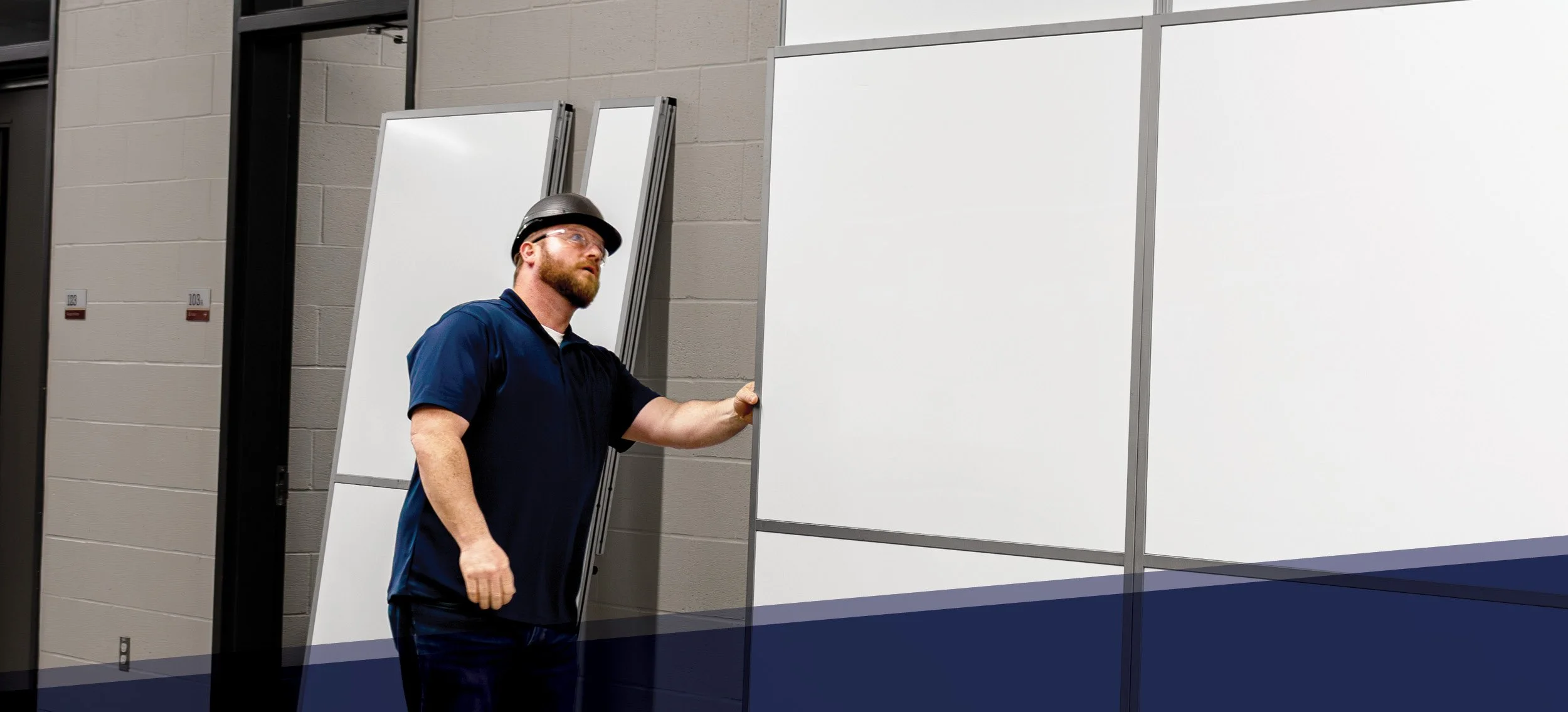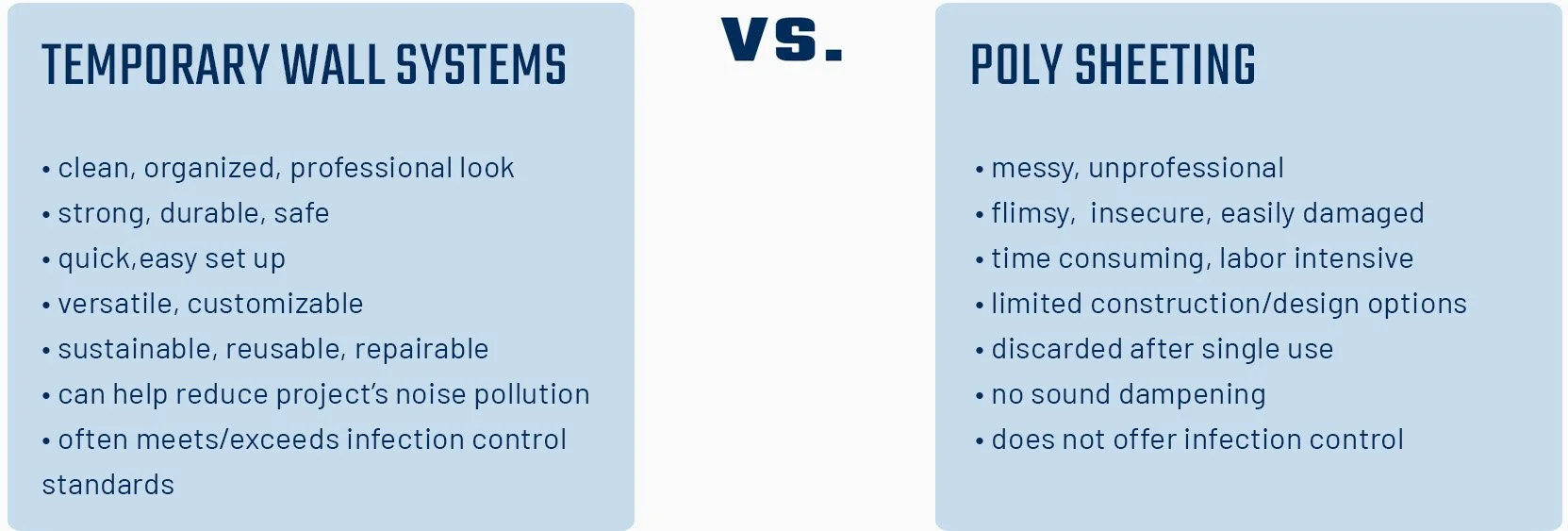TEMPORARY WALLS VERSUS POLY SHEETING: THE SUPERIOR CHOICE IN CONSTRUCTION CONTAINMENT
Safely containing dust, noise, and contaminants during construction and renovation projects in public spaces demands a reliable barrier. Both temporary containment walls and poly sheeting are potential solutions, but poly sheeting falls short in many crucial areas where temporary walls shine. In this blog post we will look at the advantages of choosing temporary wall systems over poly sheeting for construction containment.
Professionalism and Aesthetics
Temporary walls provide a clean, organized, and professional look when used as barriers around construction and renovation sites. They conceal the work area and are suitable for settings where cleanliness and aesthetics matter. Poly sheeting often appears messy and unprofessional, while the look of temporary walls is closer to that of real walls. This is especially important in environments such as hospitals, healthcare facilities, schools, office buildings, hospitality settings, and retail spaces where maintaining a professional and reassuring atmosphere is required.
Durability, Strength, and Contaminant Control
Poly sheeting is flimsy and insecure while temporary wall systems are built to be strong and stable. Temporary walls are extremely durable and built with sturdy materials like anodized aluminum frames and polycarbonate panels. They offer better resistance to damage and wear compared to fragile, flexible, and easily torn poly sheets. Temporary wall systems provide a reliable barrier safer for the surrounding environment, and help create a more secure workspace during projects.They also offer a higher level of dust and airborne contaminant control than poly sheeting, particularly those walls built with closed-cell foam gaskets and adaptable designs.
Ease of Use and Efficiency
Temporary containment walls are designed for quick, straightforward installation and removal. They utilize modular components that connect easily and seamlessly, minimizing both downtime and labor costs. Temporary walls often require less time and effort to install compared to cutting, taping, and securing poly sheets. Setting up and taking down poly sheeting can be time-consuming and labor-intensive. Temporary wall systems are self-supporting and more stable, while poly sheets rely on tape and adhesives which can easily fail or be compromised over time. The zippered entry/exit systems used for poly sheeting containment often cause tears in the poly through their use leading to increases in labor to repair the damaged sheeting during the job. Temporary containment walls use integrated doors that are both secure and installed efficiently.
Versatility and Customization
Temporary wall systems are highly versatile. A selection of panel types and sizes provides both flexibility in design and the ability to fit specific project requirements. They can be configured with a range of door options, windows, and exhaust ports to suit specific needs. Temporary walls can be custom wrapped with branding or other graphics to enhance their look and provide information.
Sustainability and Reusability
Many temporary wall systems are reusable, reducing long-term costs, minimizing waste, and contributing to sustainability. This is a significant advantage over single-use poly sheeting which is discarded after a single project. Temporary wall systems can often pay for themselves within a few uses. Rental options further enhance the cost-effectiveness of temporary walls.
Sound Attenuation
Some temporary wall systems incorporate sound-dampening materials that help reduce noise pollution from the construction site reaching adjacent spaces, which poly walls cannot achieve. This can be a major benefit in noise-sensitive environments like hospitals, schools, museums, and libraries.
Compliance with Industry Standards
Temporary containment walls are often designed to meet or exceed industry standards, such as specific fire safety and building codes, and ICRA Class IV and V infection control requirements. This helps ensure a safer, contained, and compliant workspace, which is especially important for healthcare construction and renovation projects. Poly sheeting does not offer the same compliance benefits, which are required in many healthcare settings.
Recap
Conclusion
While poly sheeting might seem to be a cost-effective and quick solution, it lacks the reusability, security, reliability, and professional appearance temporary walls provide. Temporary containment walls are undoubtedly the superior choice for creating a safer, more contained, and more efficient construction environment.
Learn more through our previous blog posts.


